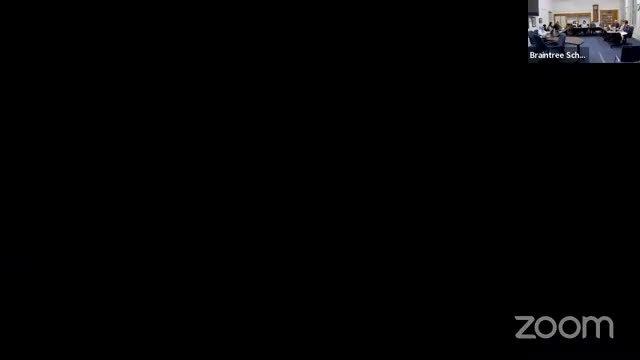Class sizes surge at BHS raising concerns among educators
October 21, 2024 | Braintree Public Schools, School Boards, Massachusetts
This article was created by AI summarizing key points discussed. AI makes mistakes, so for full details and context, please refer to the video of the full meeting. Please report any errors so we can fix them. Report an error »

During a recent government meeting, discussions centered on class sizes at BHS, highlighting concerns raised by student representatives and the BHS Education Association (BEA). The assistant principal, Andy Delery, presented data indicating that average class sizes have increased across various subjects compared to the previous year.
In the English department, the average class size rose from 20 to 21.3, with one class exceeding 30 students. The social studies department saw a similar trend, with an average size of 21.9, up from 21.0. Science classes averaged 21.4, while math classes averaged 22. World language classes had an average of 21, and electives averaged 21.7. Notably, the LECE language program maintained a significantly lower average of 8.4 students per class.
While the overall averages remain within a reasonable range, specific classes have drawn attention due to their larger sizes. The committee acknowledged that classes exceeding 30 students pose challenges for teachers, particularly in subjects requiring extensive writing and individualized attention. The increase in class sizes is particularly pronounced in Advanced Placement (AP) courses, which are strategically allowed to be larger, as it is believed that advanced students can manage the increased numbers better than those in college preparatory classes.
The meeting underscored the balancing act between maintaining a diverse curriculum and managing class sizes effectively. While the general consensus is that average class sizes are manageable, the presence of outliers—especially in higher-level courses—raises concerns about the potential impact on student learning and teacher workload. The committee remains committed to monitoring these trends and addressing any significant issues as they arise.
In the English department, the average class size rose from 20 to 21.3, with one class exceeding 30 students. The social studies department saw a similar trend, with an average size of 21.9, up from 21.0. Science classes averaged 21.4, while math classes averaged 22. World language classes had an average of 21, and electives averaged 21.7. Notably, the LECE language program maintained a significantly lower average of 8.4 students per class.
While the overall averages remain within a reasonable range, specific classes have drawn attention due to their larger sizes. The committee acknowledged that classes exceeding 30 students pose challenges for teachers, particularly in subjects requiring extensive writing and individualized attention. The increase in class sizes is particularly pronounced in Advanced Placement (AP) courses, which are strategically allowed to be larger, as it is believed that advanced students can manage the increased numbers better than those in college preparatory classes.
The meeting underscored the balancing act between maintaining a diverse curriculum and managing class sizes effectively. While the general consensus is that average class sizes are manageable, the presence of outliers—especially in higher-level courses—raises concerns about the potential impact on student learning and teacher workload. The committee remains committed to monitoring these trends and addressing any significant issues as they arise.
View full meeting
This article is based on a recent meeting—watch the full video and explore the complete transcript for deeper insights into the discussion.
View full meeting
